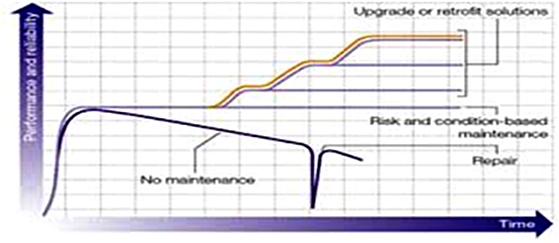Marvin M., one of our newest members from Kenya gives you tips to optimize the life of electrical switchgear. We hope it will help!
Introduction
Modern manufacturing processes, as well as computer processes, primarily seek to reduce on equipment downtime. Equipment failure accounts for millions in damage and lost revenue.
A number of such detrimental scenarios can be eliminated, or reduced through optimizing the switchgear life and enhancing reliability. With limited finances available for new equipment purchase and capital projects, the only workable solution is maintenance of the existing equipment. Do note that switchgear is composed of bus structures, as well as more active components that include fused switching devices and circuit breakers.
The article focuses more on low and medium voltage circuit gears, as they are in wide application in switchgear and switchboards. The following tips do come in handy.
Maintenance
The primary switchgear maintenance procedures include cleaning, inspection, tightening, lubrication and exercising. The maintenance schedule depends on equipment condition, operating environment and criticality to the whole system.
Various contaminants such as dust, used lubricants and dirt deteriorate the conductive materials, insulation and protective installations. The engineer or technician on site should prepare a detailed maintenance plan for each lineup.
Reconditioning
In-shop reconditioning is a more intensive maintenance activity. It involves testing the circuit breakers against ANSI standards, disassembly, cleaning and refurbishing. The reconditioned circuit breaker is again tested as per the standards before re-attachment.
Do note that reconditioning is necessary if the in-house maintenance plans does not sort out the circuit breakers within the industry standards.
Record and Trend Maintenance
In some cases, the maintenance testing fails to track the performance of the circuit breakers, resulting in unnoticed degradation of the parts. Do note that switchgear components can still function even when without design tolerance.
However, for enhanced reliability and extended life, tracking test data is necessary to have a better notion of the system expected longevity. The engineer should come up with a predictive performance plan that primarily focuses on engineering analysis of the testing data.

Performance of the switchgear versus expected lifetime
Equipment Upgrade
Keep up with technological developments through replacing aging switchgear with new line-ups, even with regular maintenance.
Do note that advances in material science and controls mean better performing circuit breakers, on-board diagnostics and reduced maintenance requirements. Taking advantage of the developments only means a timely upgrade and replacement.
When considering an upgrade, the factors to consider including the operating environment, reliability, cost and availability of spare parts. However, the managers and engineers should also consider the capital cost, and any disruption to regular work process flow since interruptions without a feasible temporary re-route can be quite expensive in terms of production loss.
Predictive Maintenance
Luckily, for engineers and technicians, the advancements in switchgear equipment and reliability come hand in hand with the development of predictive maintenance tools.
The integrated tools provide real-time monitoring, and impending failure warnings. In essence, they provide a valuable tool for predicting equipment life, maintenance requirements and recognizing conditions surpassed or un-noticed during the inspections.
The common predictive maintenance tools include wireless temperature alarms, partial discharge monitoring tools, assessment tools, infrared inspections, and electronic trip units.
Conclusion
There are two extremes when it comes to switchgear performance; satisfactory performance and complete failure. The latter occurs as the equipment nears the end of the expected life. Lack of maintenance and inspection accelerates the period to non-function, or significantly reduces the expected equipment life.
However, by implementing the highlighted tips, you can maximize the reliability and life of the components.
I hope my article helped some of you! You can add your own tips by commenting below.
Marvin M.
Part of maintaining switchgear is ensuring your protective devices operate in the right sequence. But how often must you verify that the settings and sizes are correct? Any time you have a change on the utility system or to your own system, you must confirm the short circuit withstand and interrupting ratings of your equipment are still adequate. A short-circuit study determines the magnitudes of available short-circuit current at each of your switchgear locations. A proper study will identify any switchgear that available short-circuit current would overstress.